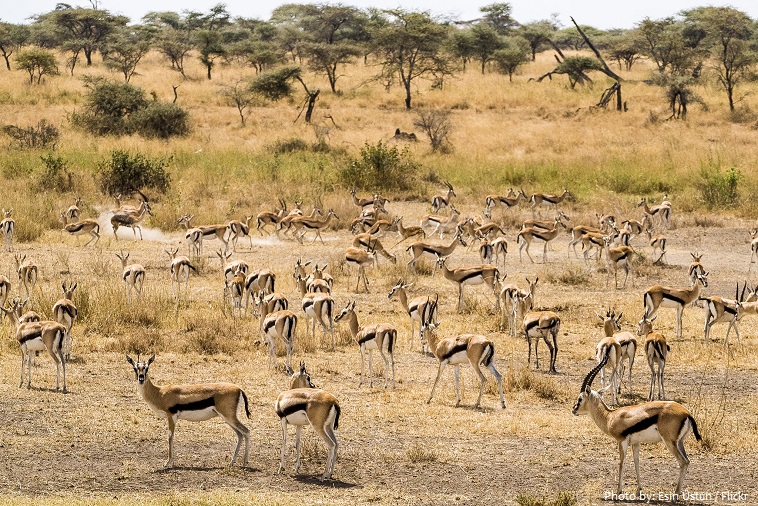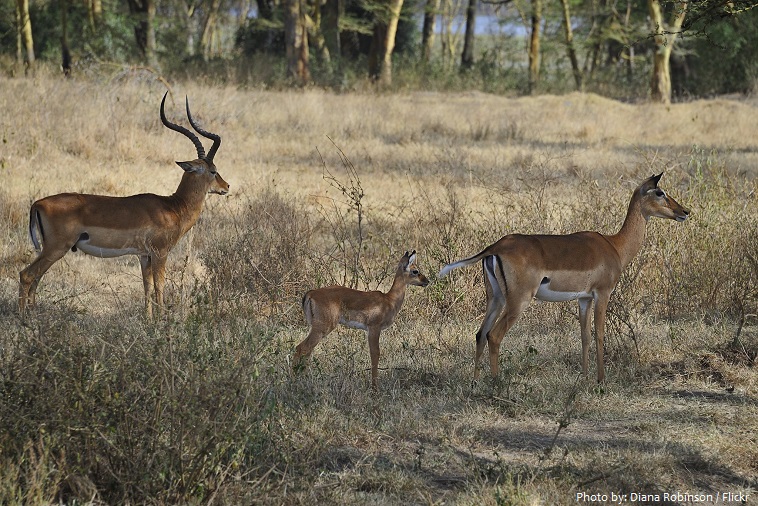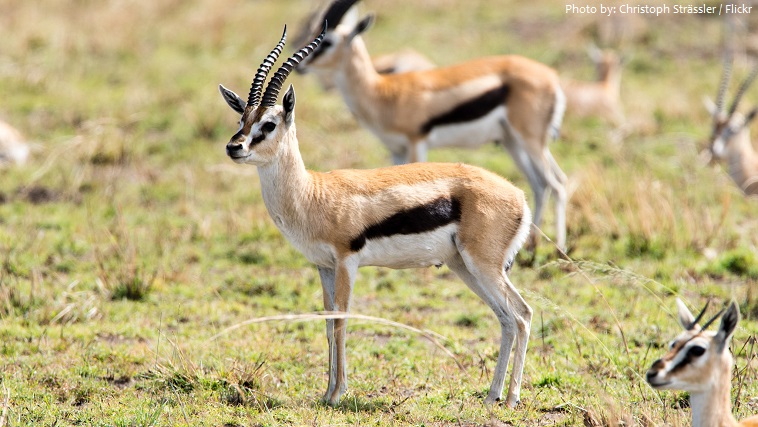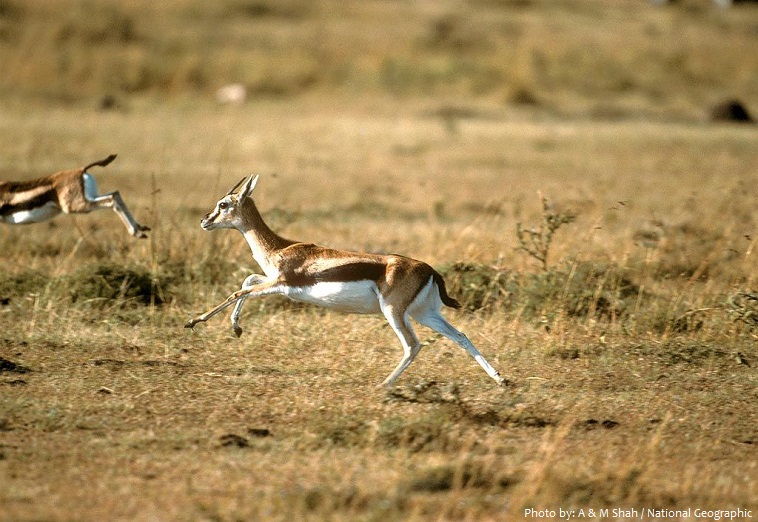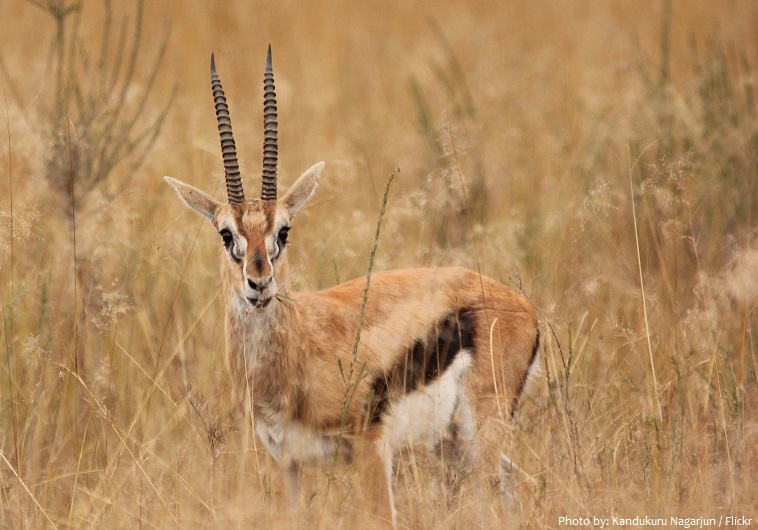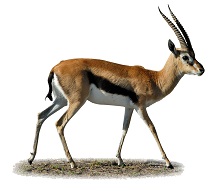Thomson’s gazelle is one of the best-known gazelle species.
It is named after explorer Joseph Thomson and is sometimes referred to as a “tommie.”
The scientific name of Thomson’s gazelle is Eudorcas thomsonii.
Thomson’s gazelles are found in eastern Africa, in Kenya, Tanzania, and southern Sudan.
They live in dry, short grasslands and shrubby savannas.
Thomson’s gazelles can be found in numbers exceeding 550,000 in Africa and are recognized as the most common type of gazelle in East Africa.
The lifespan of a Thomson’s Gazelle is from 10 to 15 years in the wild.
Thomson’s gazelle is a small gazelle, it stands from 55 to 82 cm (22 to 32 in) at the shoulder.
The head-and-body length is typically between 80 and 120 cm (31 and 47 in).
Males weigh from 20 to 35 kg (44 to 77 lb), while the slightly lighter females weigh from 15 to 25 kg (33 to 55 lb).
The coat is sandy-brown to reddish-brown; a distinctive black band runs across the flanks, from the upper foreleg to just above the upper hind leg. A buff band can be seen just above the black stripe. Their rumps are white and their tails are black. Thomson’s gazelles have reddish-brown fur on their faces, with a broad white stripe that extends from the eye to the nose and is bordered below by a black stripe.
The horns, highly ringed, measure from 25 to 43 cm (10 to 17 in) on males and 7 to 15 cm (3 to 6 in) on females. However, females have highly fragile horns; some are even hornless.
This small gazelle can run extremely fast, from 80 km/h (50 mph), to 96 km/h (60 mph) and zigzag, a peculiarity which often saves it from predators.
It is the fifth-fastest land animal, after the cheetah (its main predator), pronghorn, springbok, and wildebeest.
A noticeable behaviour of Thomson’s gazelles is their bounding leap, known as stotting or pronking, used to startle predators and display strength.
The graceful running and unique bouncing and jumping of the fleeing gazelle is often featured in wildlife documentaries.
Thomson’s gazelles are social animals that are nomadic or migratory.
They usually form groups with a fluid association of 5 to 60 individuals, although temporary associations can number in the hundreds.
Thomson’s gazelles are fairly silent animals that communicate more visually. When alarmed they will communicate to conspecifics by stotting, which is a stereotyped series of high jumps with the head held high and the legs stiff.
Thomson’s gazelles are mixed feeders. In the wet seasons, they eat mainly fresh grasses, but during the dry seasons, they eat more browse, particularly foliage from bushes, forbs, and clovers.
After a pregnancy of about six months, female gazelles give birth to one or two young and hide them in the plains grasses. The mother stays in the vicinity of the fawn and returns to nurse it daily. After this hiding period, the young follow and accompany their mother with the herd.
Thomson’s gazelles are important to food chains, being consumed by numerous predators, including cheetahs, lions, leopards, hyenas and jackals. They can also be prey to crocodiles and pythons, and their fawns are sometimes the prey of eagles, african wild dogs and baboons.
According to the IUCN Red List, Thomson’s gazelles are listed as near threatened.
The 2016 Disney film Zootopia features an anthropomorphic Thomson’s gazelle pop star, voiced by Shakira.
Grant’s gazelle is very similar to Thomson’s gazelle, but can be differentiated by its larger size and a large white patch on the rump.
